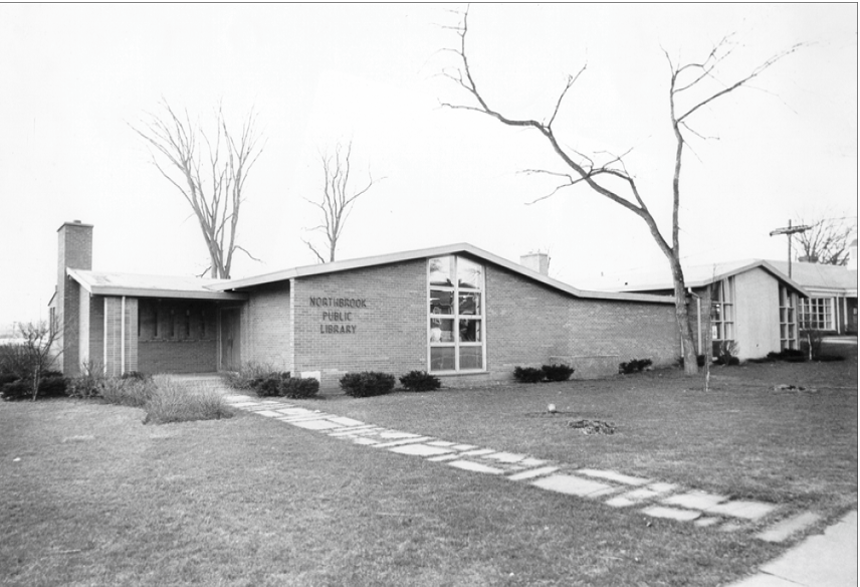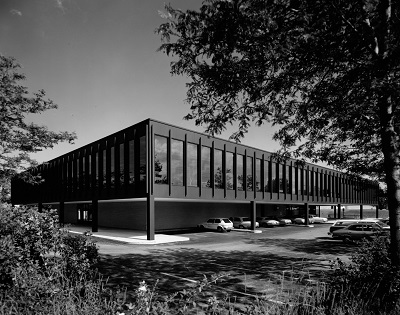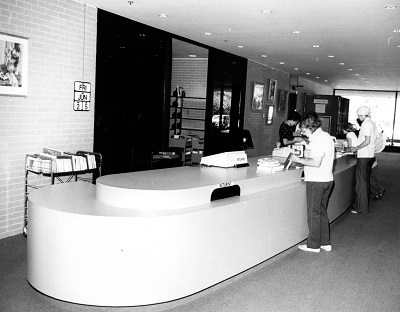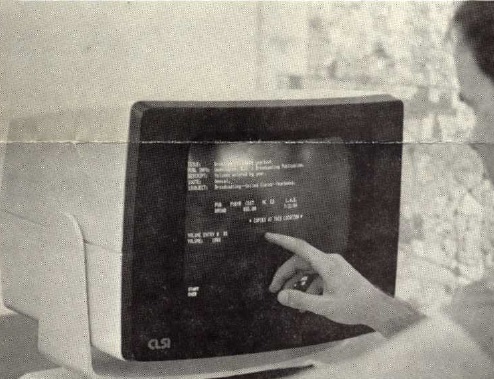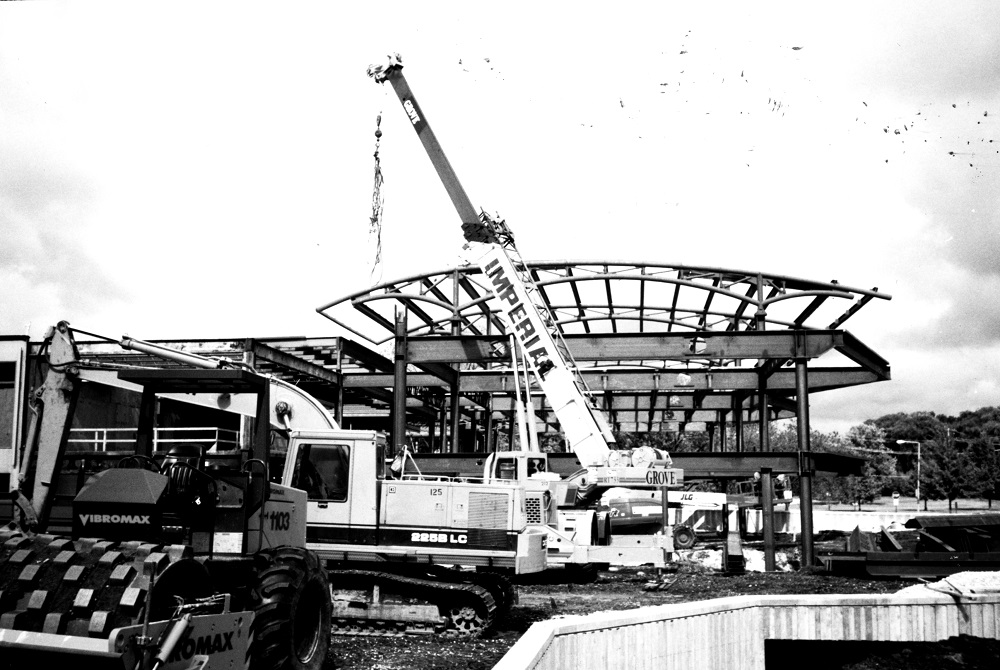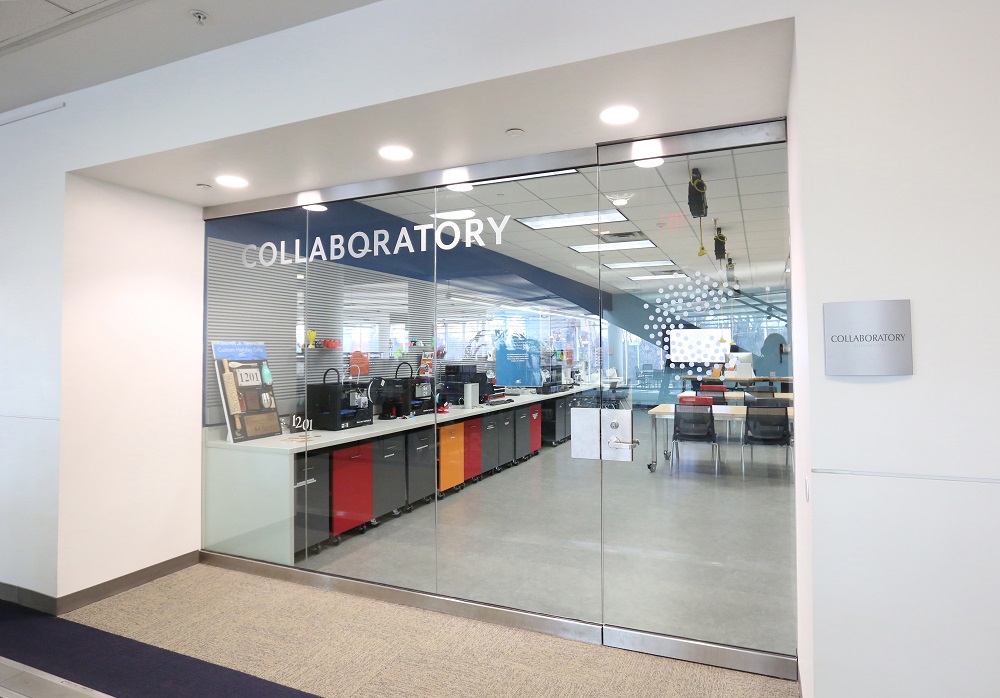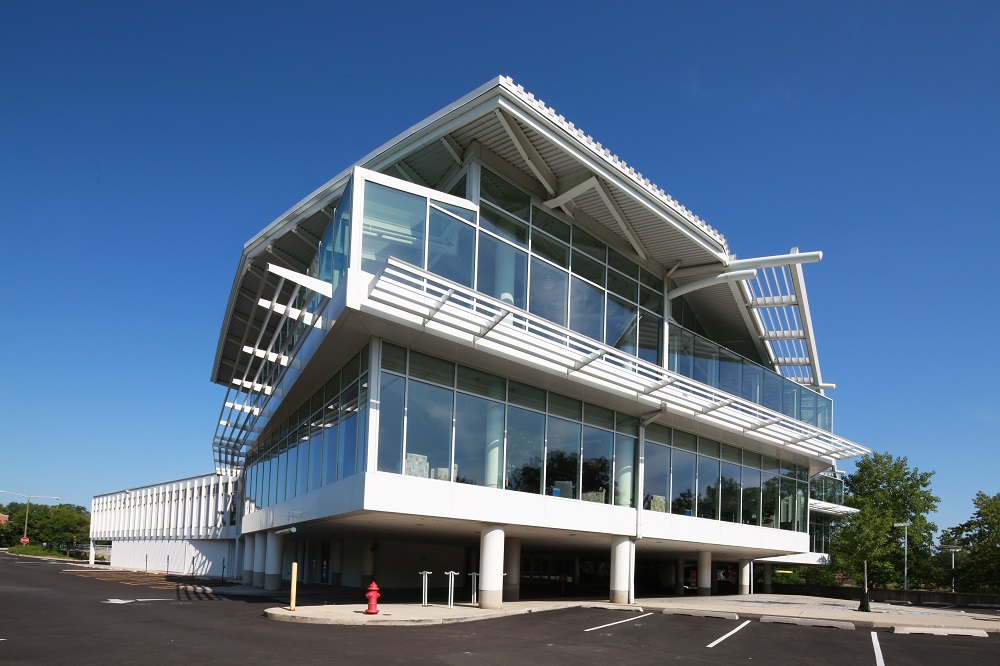The Northbrook Public Library currently serves about 35,000 residents. In 1919, when the first reading room was established above a store across from Village Green, there were about 500 people living in the area, which was originally incorporated as Shermervile. Its growth, both in size and services is a testament to the community's commitment to having a world-class library in Northbrook.
Library Leadership
Freda Thorson, Head Librarian (1952-1965)
Dorothy Curley, Chief Librarian (1965-1968)
Richard "Dick" E. Combs, Director (1968-1975)
Frances "Deedee" J. Bradbury, Director (1975-1985)
Chad Raymond, Executive Director (1985-2015) Listen to Chad Raymond's Northbrook Voices interview, recorded in 2011
Kate Hall, Executive Director (2015-present)
1919-20
-
The first reading room was established in 1919, located in a room above a store on Shermer, across Village Green.
1950s
- Bertram Pollak, president of the Northbrook Civic Association (later the Northbrook Civic Foundation), led a push for creating a public library
- The Northbrook Civic Association joined the League of Women Voters, the Service Club, the Northbrook Chamber of Commerce, the public school PTA, and the St. Norbert's PTA to launch a successful library referendum, which passed with a margin of six votes on May 20, 1951
- Boy and Girl Scouts helped index books loaned by the Illinois State Library for the new Northbrook Library and place them on the shelves in 1952
- The library opened its doors on June 28, 1952, in the old Village Hall (now the Northbrook Civic Foundation building)
- In fall 1953, the Civic Association raised the funds to build a library, located on the northeast corner of Shermer and Church streets.
- The library building was dedicated on March 21, 1954
1960s
- The library becomes a charter member of the North Suburban Library System (NSLS) which provides a network for interlibrary loans and reciprocal borrowing
- The Village donated a portion of the skating rink north of the Village Hall at the corner of Cedar and Cherry as the location for a new building
- The new building opened on May 25, 1969, designed by the firm Hammond & Roche
1970s
- The Friends of the Library held their first book sale in 1970
- First barcoded library cards and materials are introduced in 1974
- First printed and mailed library newsletter was published in 1976
- The children’s department began using a converted VW van to provide outreach to neighborhoods and schools in 1976
- A signed Storymobile provides services for children who are hearing impaired in 1979
1980s
- Interlibrary loan and reciprocal borrowing is computerized, which allows patrons to locate and borrow materials from all 43 libraries in the North Suburban Library System in 1981
- VHS tapes are available to check out for both VHS and Beta home systems in 1981
- Online computer searching is introduced in 1981
- Reference Department receives a computer terminal, funded by a state grant, in 1982
- Four online catalog terminals, some operated by touch and some by keyboard, are available to patrons in 1984
- Two Apple IIe microcomputers with Epson printers are available for patron use in 1985
- Compact Discs (CDs) are available to check out in 1985
- First computer classes are offered on using our online catalog to search for materials ("How to use the OPAC") in 1986
1990s
- Adult Summer reading club begins in 1991
- Former board member Doug Downey writes a narrative history of the library detailing how it has evolved over the years in 1992 (updated in 2002)
- Korean Language collection begins, courtesy of Korean Canaan Presbyterian Church in 1993
- 1-hour appointments are available for patrons to access the Internet using the Netscape browser in 1995
- Adult Winter Reading Club begins in 1997
- The library closes on June 14, 1998, and temporarily relocates to the Jewel (now Sunset Foods) at 1133 Church St. for the 12-15 month building expansion
- On July 26, 1999, the permanent building at 1220 Cherry Lane reopened its doors to the public
- The library receives the American Library Association’s John Cotton Dana Award for outstanding library public relations of its “Jewel of a Library” campaign, informing the public about its temporary relocation to the Jewel location in 1999
2000s
- Internet Basics classes begin in 2000
- A DVD collection is added in 2000
- The Northbrook Public Library Foundation is formed in 2002
- The library website (www.northbrook.info) is launched in 2003
2010s
- The library receives a 5-Star rating from Library Journal in 2012, 2013, 2019
- 3D printer service is offered in 2013
- The building undergoes a major renovation, including improvements to the Auditorium and meeting rooms, the addition of a Cafe space and Friends bookshop, and ADA, HVAC, and tech improvements in 2014, completed in 2015. The library also gained 1,882 square feet in this renovation, bringing it to a total of 87,223 square feet
- The library hosted TEDxNorthbrookLIbrary in 2015, 2016, and 2018
- The building participates in Light It Up Blue to commemorate Autism Awareness Month and wins the Illinois Library Association Demco Library Innovative Award in 2015
- The library’s makerspace, the Collaboratory, opens with the Peltz Digitization Room and the Peltz Digital Media Lab, thanks to a generous bequest from resident Howard Peltz in 2018
- The first Northbrook Repairs invites people to work with skilled volunteers to help repair broken household items in 2019
- The first One Book, One Northbrook was held in July 2019, featuring programs that explored the book Born a Crime by Trevor Noah.
2020s
- In March 2020, the library closed due to the COVID-19 pandemic and reopens the building to patrons from July through November with limited services
- Virtual programs and Curbside Service provides at-home services to patrons while the building is closed due to the pandemic
- The library hosts its third TEDxNorthbrookLIbrary, which was live-streamed from the Auditorium in 2020 due to social distancing restrictions
- The library received a 5-Star rating from Library Journal and is ranked #1 in the state and #2 in the nation in its budget category in 2020
- Completed in June 2021, a lobby renovation provided a more welcoming space, including a new mural painted by a Northbrook artist, several new collections, new self-checkout machines, and an automated materials handler that utilizes RFID technology to check in and sort books. Watch a timelapse showing the installation of the automated materials handler.
- In July 2020, we debuted 13 new 2nd floor study rooms, bringing the total number of reservable study rooms to 17. In FY 2023, the study rooms were used by the public 10,200 times.
- Executive Director Kate Hall was named 2021 Illinois Librarian of the Year by the Illinois Library Association in July 2021.
- The library received a 5-Star Rating in 2021 and 2022. (In November 2023, Library Journal announced that it is pausing its Star Library rating.)
- The Village Board approved a resolution to declare the Village of Northbrook a Book Sanctuary Community in September 2023.
- In October 2023, the library surveyed the community to understand their priorities, experiences, and needs. Almost 2,000 patrons responded. The feedback will be used to inform our 2025-2027 strategic plan.

